As the Dean of IE University’s School of Architecture and Design and the Executive Director of the Pritzker Prize, Martha Thorne is embedded in key issues of architecture for today and tomorrow.

February 15th, 2019
On 31 January 2019, the National Design Centre (NDC) was the epicentre of a day’s discussion and debate about the future of housing. The day’s proceedings had been organised by Spain’s IE University as part of its travelling ‘Venture Day’ program, which comprises a panel discussion as well as a competition for start-ups specialising in the focal area.
This Singapore edition of Venture Day (with DesignSingapore and NDC serving as venue host) had the participation of IE’s School of Architecture and Design. Making the trip from Madrid to Singapore for the event was the School’s Dean Martha Thorne, who is also the Executive Director of the Pritzker Architecture Prize – a position she’s held since 2005.
We caught up with Thorne to talk about entrepreneurship and the massive shifts happening in architecture and construction, the future of cities and architectural education, the Pritzker, gender issues in the architecture profession, and, of course, the ideas that emerged during Venture Day.
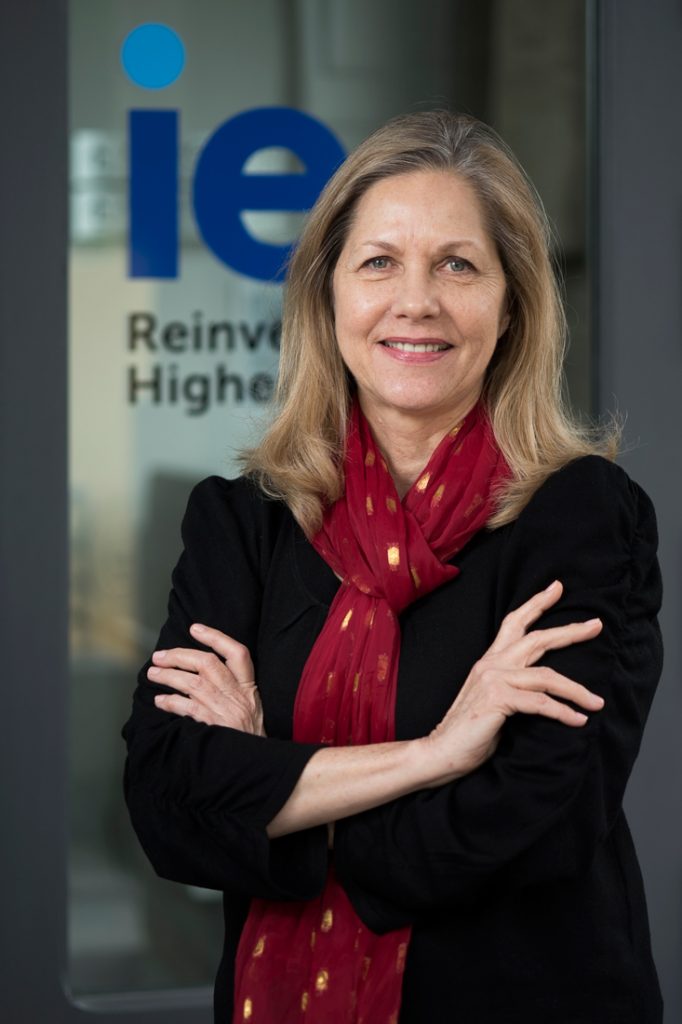
Martha Thorne
Martha Thorne: The overall theme was the future of housing, but of course it’s not housing in the sense of a student suggesting a plan for a future house; it could be anything related to housing. As a matter of fact, the winning company had more to do with the internet of things than it did with building materials. There were two proposals that had to do with more modular construction to meet housing need. Another had to do with finance.
The start-ups we saw were all a combination of a little bit or a lot of technology, shared economy, relying on either new materials or new concepts, and having people really participate – not just as consumers but as participants.
Martha Thorne: What it tells me is that we in schools of architecture – and especially at my school – we have to continue insisting in our message, which is ‘expand the role of architecture and design for the twenty-first century’. There are many paths that architects and designers can choose, and the role of education is to give them the keys – the tools, the knowledge, the skills, the framework – so they can choose their path. That means understanding the real world from a 360-degree point of view.
It’s not about having to be a specialist in everything, but clearly technology is changing the way we work, live and shop. We have to understand how that affects behaviour so the spaces and places we design can be meaningful for that new lifestyle. We also have to be able to talk to our clients – whether it’s a developer, a city government or a family. In order to empathise with those people, you have to know something about where they’re coming from in life.
The idea of project-based learning, taking on a real challenge, doing the research and then proposing alternative solutions, having the crits, knowing that there are multiple alternatives, multiple solutions, losing your ego so you don’t have to be wedded to the first idea but you’re ready to improve – I think we have to preserve that. It’s an incredible advantage to architects and designers, and I think other professions and other disciplines could learn from that.
The other thing about the way architects have always approached their discipline is not shying away from complexity but understanding it and somehow embracing it, knowing they can’t solve everything but looking for the value add they can give – sometimes in very unexpected places.
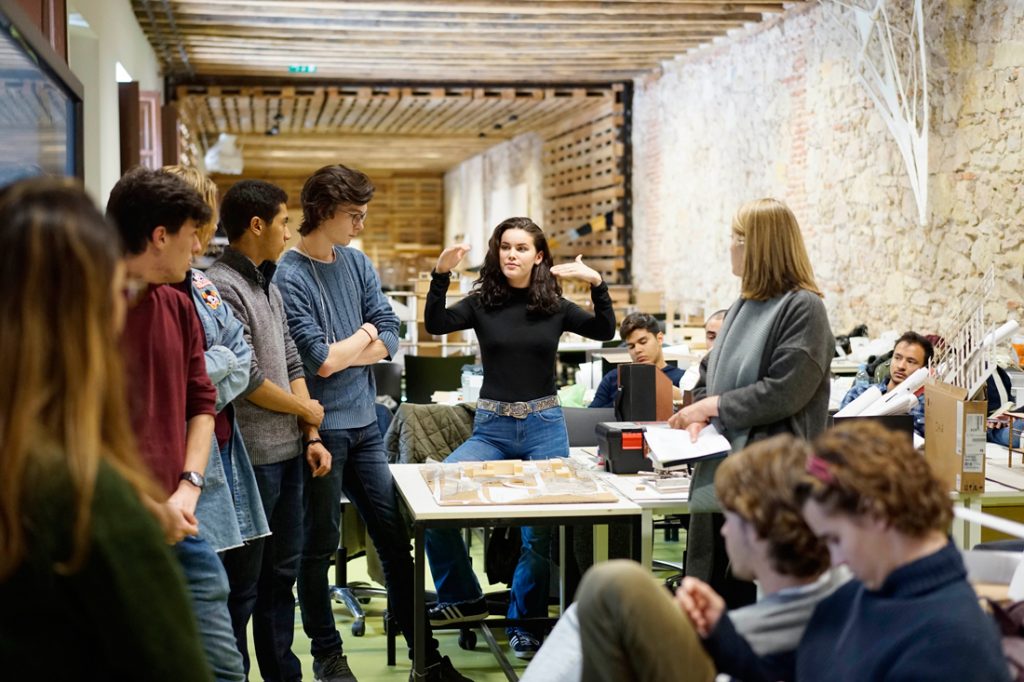
Students at IE University’s School of Architecture and Design. Photo by Roberto Arribas, IE University
I think what we have to change and add is how architects communicate with others – it’s partly verbal communication but it’s also the ability to listen and understand other people. I think architects have often gotten themselves into an elitist position and been considered the added luxury at the end of the process, or in the case of Europe and the crisis that began in 2008, the perpetrators of the crisis. So they need to communicate what they do and why they do it. That will help them get a place at the table.
What do I hope we are teaching our students in addition to the disciplines of architecture and design? I hope we’re teaching them what it takes to get an idea realised – not just that the bricks or the panels go together a certain way, but an understanding of the agents that are involved in that ecosystem. How do banks operate? What is a good way to have public participation so you understand what people are really saying? Or what is the government looking for?
Critical thinking and curiosity are number one. Don’t accept anything at face value, whether it’s Wikipedia or what your client says. Always question.
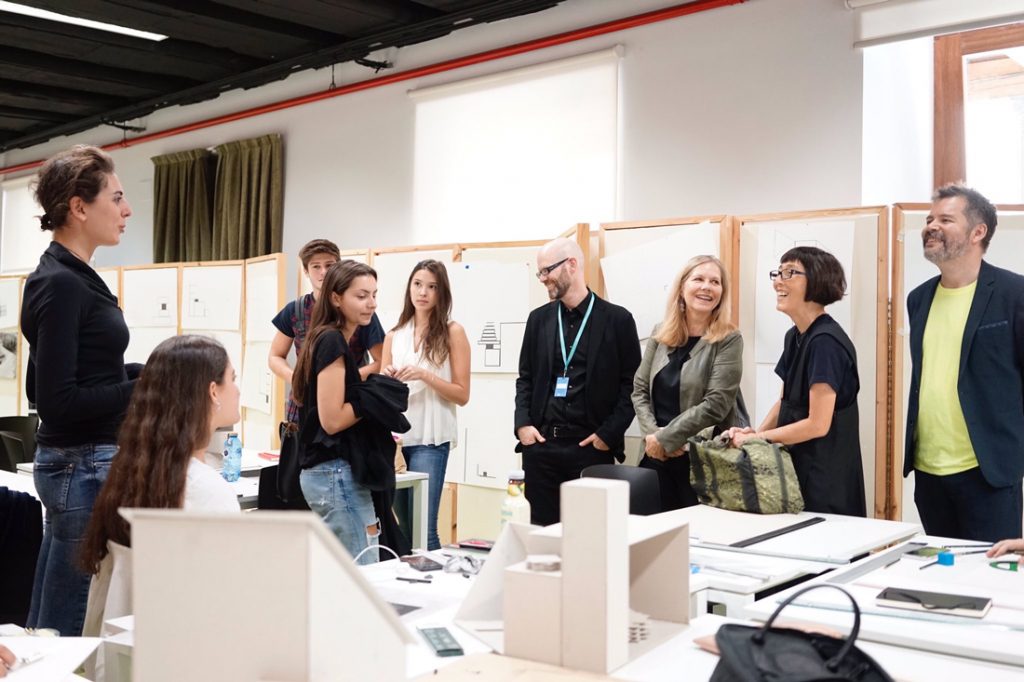
Martha Thorne with Kazuyo Sejima (Pritzker Prize winner with Ryue Nishizawa in 2010), faculty and students at IE University. Photo by Roberto Arribas, IE University
Martha Thorne: I would say yes and no – and I’m not trying to be evasive. The criteria have existed since 1979 and are still the same – as expressed in a body of built work, the quality of architecture and a consistent service to humanity. In what I’ve seen in the years I’ve been with the Pritzker and what I’ve heard in the discussions, is an evolution – a broadening of understanding what architecture is. Clearly it’s no longer the single individual with a genius idea. It’s much more complex and this is talked about.
It depends on the jury how they will interpret the criteria each year… Where I do see a change in the Priztker is that when I joined in 2005, we had a lot of information through the printed word. Places that didn’t have the printed word or magazines in a language jury members could understand – they were just out there. Now with technology there’s no excuse, because we can all reach out to someone even if we don’t know them.
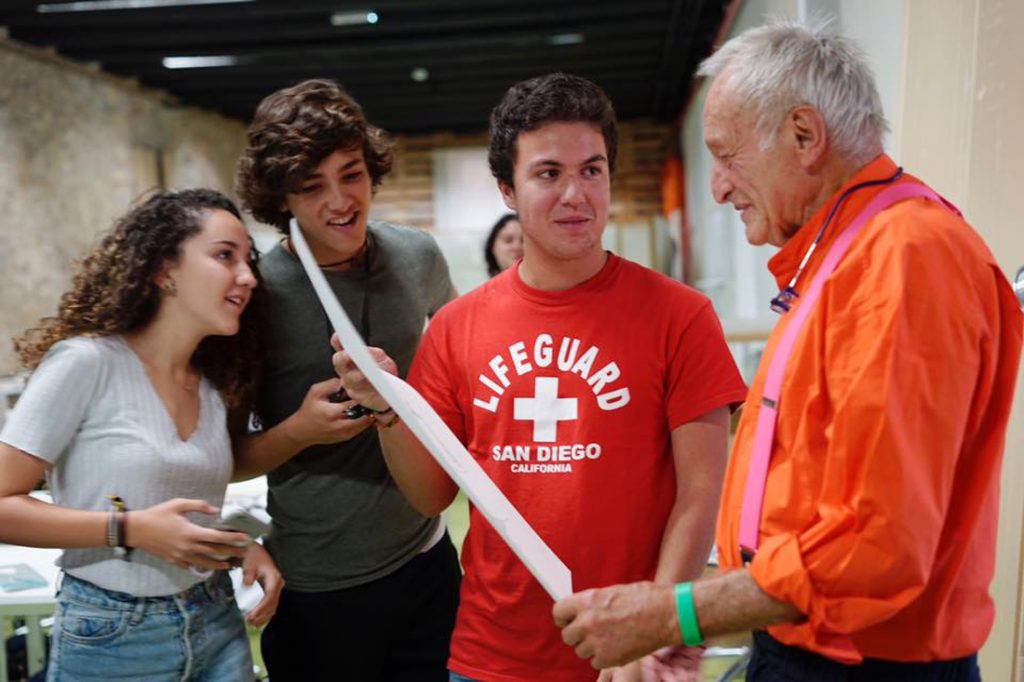
Richard Rogers with students at IE University. Photo by Roberto Arribas, IE University
Martha Thorne: I am very happy to. I’m very passionate about opening doors, breaking the glass ceiling. It’s much easier for me to do that in an academic institution where I’m the Dean and because I’m at a point in my career that I’m not worried about my next job. It’s great freedom to know I can say exactly what I believe and try to do exactly what I think is right. And I won’t have to fear the consequences anymore.
At IE School of Architecture and Design, as most schools of architecture and design, we have more women studying than men… The one area where it still is difficult is in terms of bibliographies. History is alive. It needs to be re-looked at from many perspectives. It’s not just in the purview of men to look at it. Women can do that and many are wonderful authors. So that’s my next battle – getting the lists of books and articles that people read incorporating the voices of women authors and women scholars.
When it comes to the Pritzker, I know that the jury is enormously sensitive to the profession. I think the petition about Denise Scott Brown and a retroactive prize was a very powerful message to them. It was very painful to me because every time someone signed the petition, I received an email, and it was 20,000!
But I also think we have to put things into perspective. One prize that often looks at people at the end of an illustrious career is certainly not the only place we could affect change. And I would say it is probably not the most effective place. It’s one prize a year. I think where change has to come is in the profession. And in that sense I look to my colleagues in Australia. I think of Parlour for example.
In academia, in my institution, it has to come not only in the school but in the institution – making sure women are in top positions. But even more than that, we have to make sure women can ascend – not be pigeonholed in the lower-middle management.
I often hear the argument that it’s because women stop to have children and architecture is a gruelling profession; when you stop to have children, you can’t get back in. But we shouldn’t trick ourselves into believing that is the reason. Because facts tell us that women start at lower salaries for equal positions, with equal training, and never bridge the gap. Many, many of us never had children, and women who have not had children, or who have had children but have had stay-at-home dads, suffer the same discrimination, or suffer the same glass ceiling, or suffer the same difficulties about achieving the height of their career ten years later than men.
So I think if we had really serious study, quantitative and qualitative, we could find out what’s going on and then maybe start to change the profession.
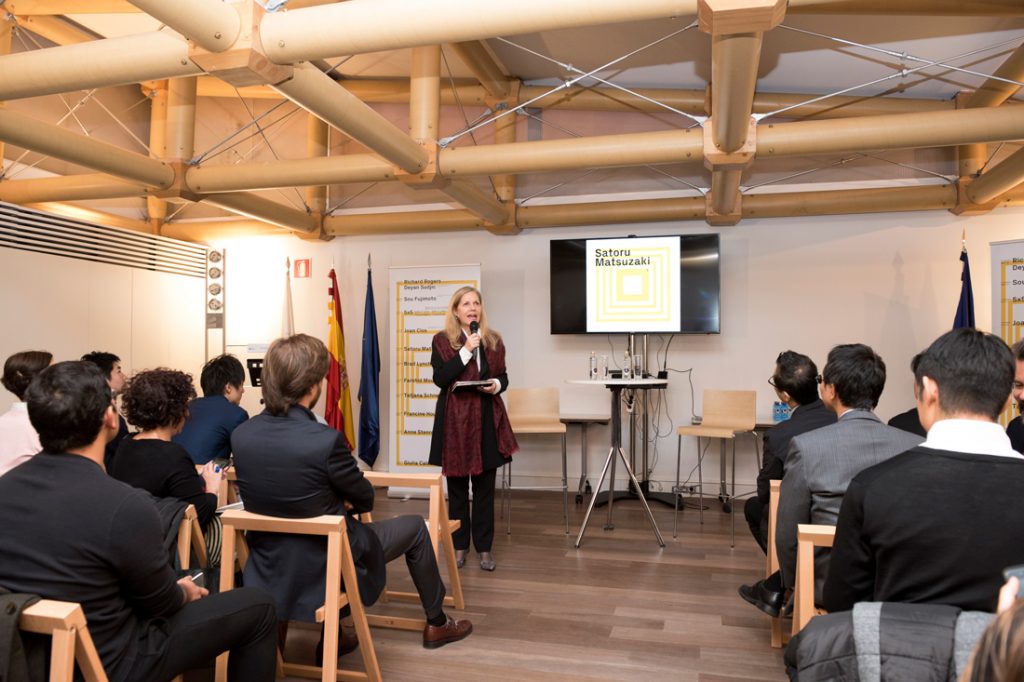
I love talking about cities… I think there are some key issues. Technology is really important, but I think the missing link right now is disconnection between technology and the physical environment – on two levels. One, technology changes our behaviour, and therefore we need different things in the physical environment on an individual level. But now in the cities, technology is changing the city. And in the whole idea of smart cities, where are the architects? It’s sort of in the hands of engineers and technology companies –
Martha Thorne: And lots of city governments are taking the lead. I think there’s another phase, which is the opportunity to make cities even more democratic, having the government and citizens working together on what is their vision of a smart city. Because obviously it’s shared economy. We’re doing it with taxi services and things like that, so why not do it with other things?
I think in terms of policy, there’s going to be a revolution in the structure of city governments because you can’t have the water department, the transportation department, et cetera – it has to change. I think that’s going to take more time. We need a new structure of governance in the cities… Cities can also do a whole lot more in terms of promoting health. But there has to be a coming together of health professionals and architects and designers.
I think mobility is really important… If mobility means you and I can get to work really quickly but still the school janitor takes an hour and a half – that’s not mobility, or it is but it’s not democracy.
I wish I could be around for another two or three hundred years to see where cities are going. That would be my dream!
INDESIGN is on instagram
Follow @indesignlive
A searchable and comprehensive guide for specifying leading products and their suppliers
Keep up to date with the latest and greatest from our industry BFF's!

For those who appreciate form as much as function, Gaggenau’s latest induction innovation delivers sculpted precision and effortless flexibility, disappearing seamlessly into the surface when not in use.

Sydney’s newest design concept store, HOW WE LIVE, explores the overlap between home and workplace – with a Surry Hills pop-up from Friday 28th November.
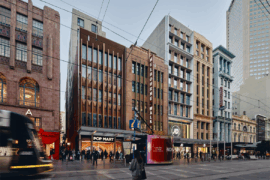
Merging two hotel identities in one landmark development, Hotel Indigo and Holiday Inn Little Collins capture the spirit of Melbourne through Buchan’s narrative-driven design – elevated by GROHE’s signature craftsmanship.
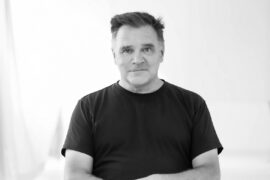
In this comment piece, COX Principal David Holm reflects on Carlo Ratti’s curatorship in which climate, colonisation and gender equity took centre stage at the Venice Biennale.

With the inaugural Glenn Murcutt Symposium set to take place in Sydney in September 2025, Pritzker Prize-winner Francis Kéré receives the Murcutt Pin.
The internet never sleeps! Here's the stuff you might have missed

In creating interior spaces that enhance the wellbeing and experience of people, true responsible sourcing also considers the impact of materials and making.

For those who appreciate form as much as function, Gaggenau’s latest induction innovation delivers sculpted precision and effortless flexibility, disappearing seamlessly into the surface when not in use.